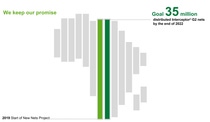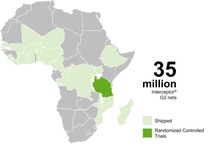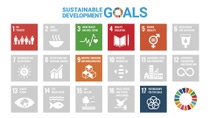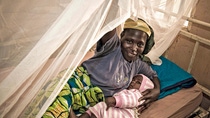Agriculture
The New Nets Project
Malaria continues to be a major public health problem worldwide. As long as it exists, it threatens the poorest and most vulnerable populations and has the potential to resurge in times of crisis, like during pandemics. BASF remains committed to working with partners to supply life-saving Interceptor® G2 mosquito nets. We are doing this fight together to stop malaria and save lives.
On target to distribute 35 million Interceptor® G2 mosquito nets
BASF, MedAccess and the Bill & Melinda Gates Foundation announced in 2019 an agreement to facilitate the supply of 35 million Interceptor® G2 mosquito nets to countries where insecticide resistance is hindering the fight against malaria. The four-year agreement accelerates access to this innovative new mosquito-control technology to communities with the greatest needs. Despite the challenges caused by COVID-19 pandemic, we kept our promise and shipped 35 million Interceptor® G2 nets by end of 2022 under the New Nets Project. A big thank you to all our partners who made a tremendous effort in reaching this important milestone. And a special thanks goes to national malaria control programmes and frontline community health workers who continue to heroically distribute mosquito nets while tackling COVID-19.

Thirty-five million Interceptor® G2 mosquito nets distributed in Africa
Malaria is a life-threatening disease but it is preventable and treatable. In the fight against malaria, Interceptor® G2 insecticide treated nets for resistance management have played a vital role. They protect the individual and, crucially, the community by killing mosquitoes and stopping them from spreading the disease further. However, mosquito populations are becoming resistant to pyrethroids, the only class of insecticide used for bed nets since the 1980s leading to an urgent need to develop and test new tools. The New Nets Project aims to accelerate this process by working to build the evidence around a new generation of nets treated with different types of insecticides. Under the New Nets Project, more than 35 million Interceptor® G2 mosquito nets have been shipped to eight African countries where they are most needed, where resistance is growing. Based on WHO quantification guidance, 63 million people have been protected and more children were able to access education.
Please click on the hot spot (+) of your choice to learn more about the specific country.

Values create value
It takes scientific expertise and persistence to continue the fight against Malaria. We will not stop innovating for the next-generation mosquito net. To save more lives. To give more children the opportunity to stay safe and to attend school. This goes beyond business - this is a crucial investment in humanity.
Quotes from our partners
Our shared commitment and values boost the impact of our joint fight against malaria. We are proud and thankful for working together with such passionate partners and associations.
Sustainable Development Goals
The fight against malaria takes persistence, partnership and innovation. Collaboration with the right partners can unlock breakthroughs in combating increasing insecticide resistance. Our Interceptor® G2 mosquito nets are based on a new class of insecticides in more than 30 years and thus a testament to our long-term R&D commitment. Find out how we contribute to the highlighted SDGs.
Please click on the hot spot (+) of any colored SDG icon to find out more about relevant Sustainable Development Goals.

Interceptor® G2 milestones
We have reached remarkable achievements in the fight against malaria, especially insecticide resistance. Thanks to our trustful collaborations with partners that has led to this game-changing innovation. Learn more about our wins against this deadly disease from the lab to the people we support.
Please click on the hot spot (>) of your choice in the timeline.
Public health stories
Every year, more than one billion people suffer from mosquito-borne diseases such as malaria, dengue, chikungunya, West Nile Virus and yellow fever. Controlling the mosquitoes and insects that spread these illnesses is a critical investment in the future and can result in fewer sick people, better school attendance, stronger economies and a healthier, brighter future for entire communities. Read our stories to learn how we collaborate with partners to improve the quality of life for people around the globe through disease prevention.




